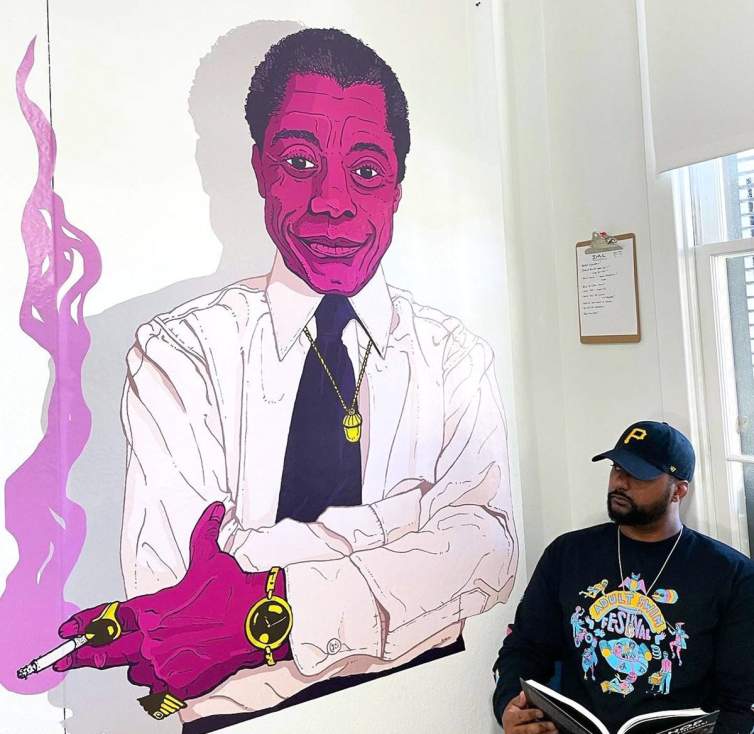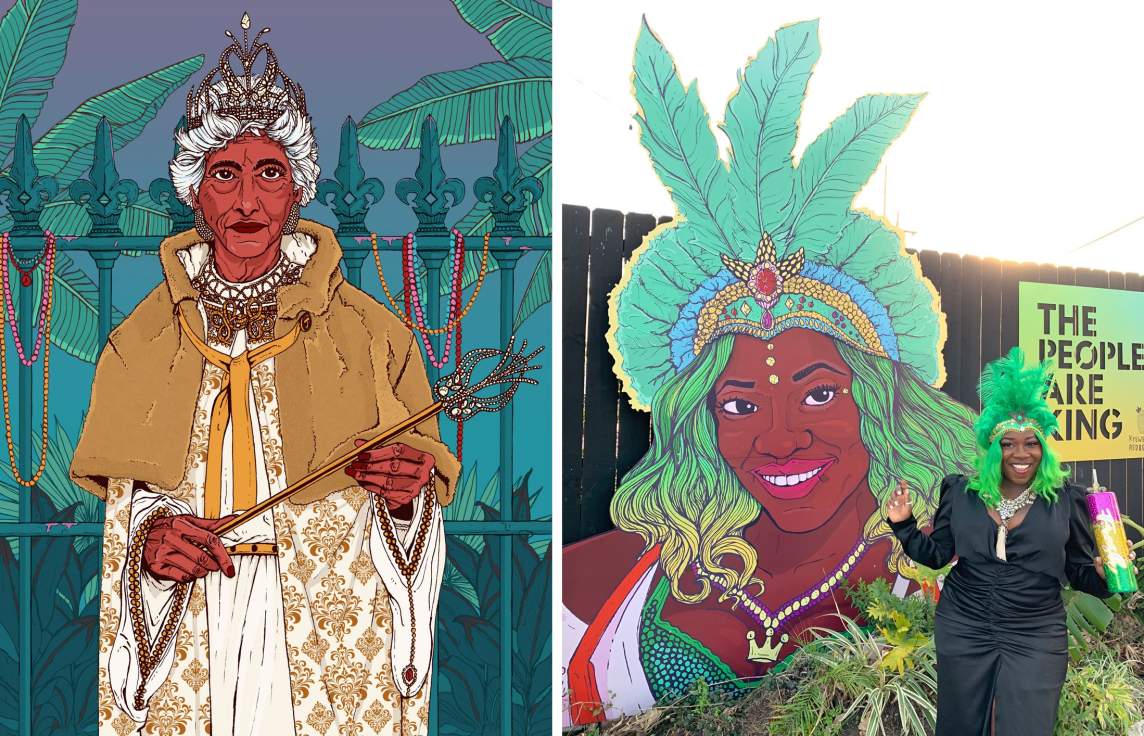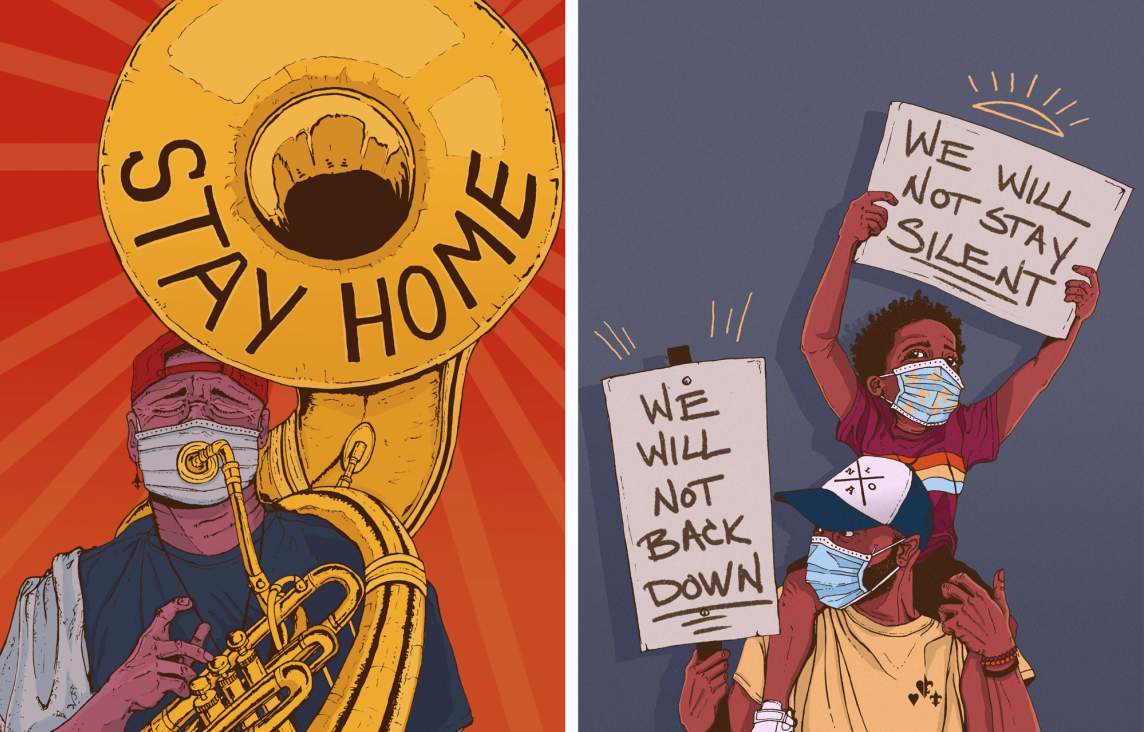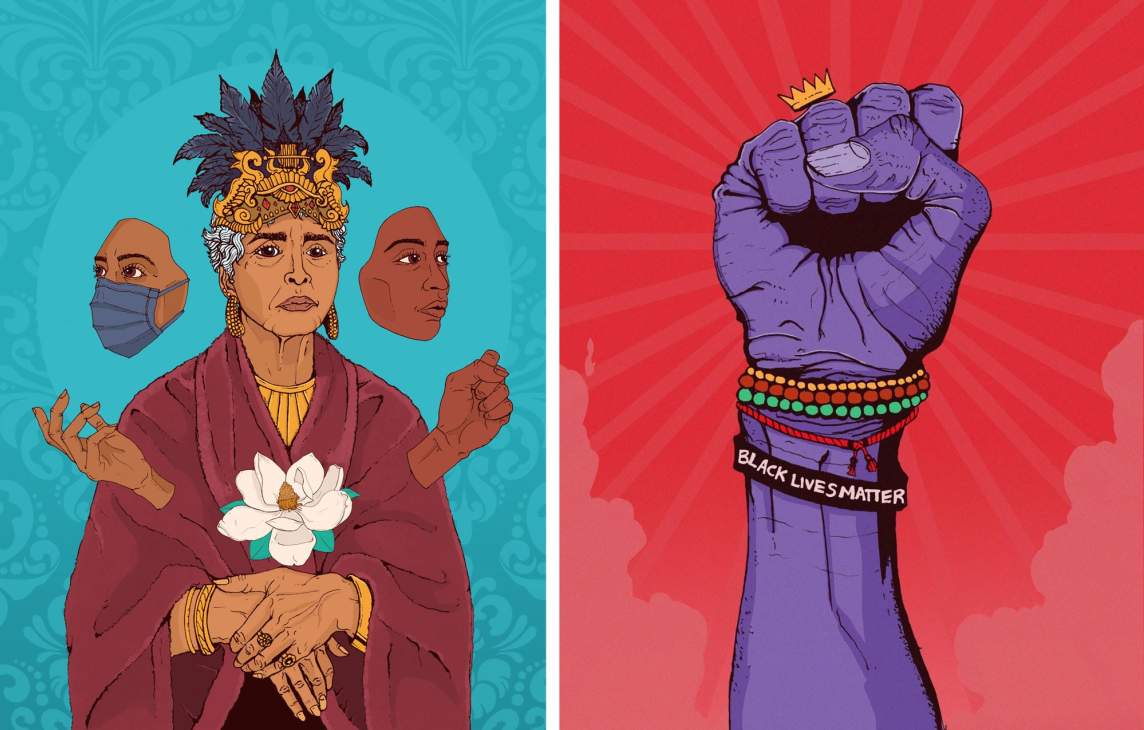In the Studio: Christian Việt Đinh
“My nail salon series is meant to celebrate the success of the Vietnamese nail s...

Nik Richard is a New Orleans-based artist and Fall/Winter 2021 Artist-in-Residence at the Joan Mitchell Center. We interviewed him about his work and residency experience in December 2021. The following is an edited transcript of that conversation.
I am a visual artist, born and raised in New Orleans. My official introduction to any kind of art organization was YAYA—Young Aspirations, Young Artists—which I joined back in 2000 when I was in eighth grade. From there, I was a NOCCA (New Orleans Center for Creative Arts) student. I learned to experiment with different techniques and mediums at NOCCA—and attended college at University of New Orleans where I started as an art major, but then switched to urban studies with an interest in urban design. Hurricane Katrina happened during my sophomore year in college. So of course, like a lot of people my age, that really influenced the direction of what I wanted to do with my life. And recently, within the past seven years or so, I've been focusing on how I can merge my artistic practice with my mission as an urban planner.
When I started out, my artwork focused on a lot of portraiture through both painting and drawing with different mediums, and through that I was able to practice different techniques and color applications. Finding different ways to apply that over the years is how I grew into being an artist. As my art career progressed with my professional career, I realized that I wanted to be more focused with the subject matter of my work. I was eight years into a career as an urban planner, and I didn't see my artwork as being something separate from that, I saw it as something where one can contribute to the other.

The first project that I could single out that represented that shift was a public art piece, The Spirit of Lower MidCity, that I completed with the Arts Council of New Orleans, along with my friend, Monica Kelly. It’s a sculpture piece on Galvez between Tulane Avenue and Canal Street. We were tasked with retelling the story of the historic Mid-City neighborhood that was razed after Katrina to make way for the medical district. We had a very big task: we're not only creating art, but we're also retelling a story, to the current workers and residents of that medical district that pass through the corridor every day. It was more than just a visual art piece. It was a community project.
The piece is 22 steel panels, so as you walk through all 22, you kind of get a sequential narrative of a New Orleans neighborhood that was devastated by Katrina, began to rebuild, and was then razed in favor of the new medical district . The rebuilding is the culmination that's highlighted in the middle of the piece, showing that it's not just a neighborhood that was wiped out after Katrina, like many neighborhoods were; this was a neighborhood that came back and began to rebuild. It was a neighborhood that, through the power of their community, made all the moves to reestablish themselves before policy decisions altered that progression. When that piece finally went up in 2019, it was really the first time I got to see my artwork being placed in a public space in a way where the artwork served as a historical marker for a community that was slowly being written over.

Lately, I’ve been focusing a lot on illustration. My initial introduction into art was through drawing, and I hand draw my illustrations. Then I use a computer and Photoshop to color them and to clean them up a bit.
The way people primarily view my art is digitally—through computers, especially now through smart phones. Currently, that's the way we view art today in general. You can wake up and scroll social media, and that's going to be your first introduction to art. You're going to see it digitally either on your phone or on your computer before you go and drive to a museum, or before you drive down the street and see public art. Maybe secondarily, you'll see it in print media, if you still consume print media on a normal basis. So just knowing that this digital experience was primarily the way that I consumed art, that just naturally became the way that I began to create art. So I've really honed my skills as an illustrator.
My focus for this residency has been taking my illustrations, the final output of which is normally a digital illustration, and finding ways to present them that can still be considered fine art. So when you view it on your phone or your tablet, I also want you to drive to the museum or the gallery and see it as well. I also want you to be driving down the street and encounter my art the same way that you would on your phone. I saw a quote earlier today that said something similar to “once we started calling art content, and artists content creators, art started losing all its meaning.” Even though it is true that the work we create to put on social media is “content,” it's much more than that.
I’m trying to find a way to remove my art from the realm of just "content" to something more socially conscious, something more intentional, something that’s a direct reflection of the space that it's being displayed in. I've been experimenting with different approaches to printing my artwork, turning my artwork into public installations, and scaling my artwork, just trying to get it as big as I can, putting it on a wall and finding different ways to make it interactive in the physical sense.

A lot of my previous works focused on portraiture and drawing pictures of people that either I admire or inspire me. They are people that I revere in some way and I’m illustrating them to kind of show my interpretation of them. A lot of people say that they can tell when something is my work, by the colors I choose, or the line work I use, and I want to continue to build on that to make my work more recognizable and distinctive.
Now, I’m interested in moving beyond portraiture. I was really inspired by America's shift to focusing on social justice in the summer of 2020, especially with the public murder of George Floyd and all of the protests that followed. I really wanted to make sure that I, as an artist, was in some way contributing. I didn't really know what that meant, but I just felt like, how can I continue to create random unintentional art at a time when everybody is glued to their phones, looking at the next big news story? What is going on in America? We're all sitting home in quarantine. We can't really go out. We can't interact. So, if I'm going to continue to create art or create “content,” I need to make sure that what I'm creating is purposeful and contributing to an overall social awareness that I want to be a part of and creatively participate in.
That is when I realized my art was taking a turn and beginning to focus on reflecting the social consciousness of Black America. For me, being a Black man in America, I can’t separate myself from everything that is happening to Black people in this country. As we say, anything that happens to one Black person in one part of the country happens to all of us; we all feel the effects of that.
I want to use all the resources that I have as an artist to continue to highlight all of the social and environmental issues that I, and the rest of the citizens of New Orleans and Louisiana, are plagued with and have to overcome on a daily basis. So, as I go through the Joan Mitchell residency and other artistic opportunities, I want to make sure that every platform that I'm given is an opportunity to educate, to draw attention and inspire activism around things like environmental justice, around social injustices, around racism.
Learn more about Nik Richard’s work at nikcurated.com and follow him on Instagram: @nikrichard.
